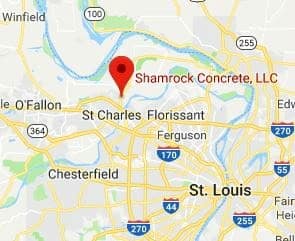Fiber Mesh Reinforcement
Plastic shrinkage occurs as fresh concrete loses its moisture after placement during the initial strength development stage. This type of shrinkage is affected by environmental effects of temperature, mostly within the concrete, while ambient temperature, wind and relative humidity play a smaller combined part. It is a particular problem in hot weather concreting. At present, there are no specific admixtures developed to handle this type of cracking.
Use Fibers for Secondary Reinforcement. Fibers can be added to the concrete mix in lieu of welded wire mesh. Which Shamrocks applies to all mixes used.
If you could look into a section of concrete poured with fibers you would see millions of fibers distributed in all directions throughout the concrete mix. As micro cracks begin to appear due to shrinkage as water evaporates from the concrete (plastic shrinkage), the cracks intersect with the fibers which block the path and provide higher tensile strength capacity at this crucial time of initial curing.
All of these facts are subjective to what randomness occurs from project to project. Concrete will crack, but that is why control joints and fiber mesh are used to reduce the potential for random cracking. Furthermore, concrete continues to strengthen over many years, along with expansion andcontraction from cold to hot seasons, as occurs in the Midwest Region. Water influences under and around the concrete during months and years also impacts the concrete performance. Cracking in the short term of days to years is unpredictable.

 Contact Ryan! He’d love to talk with you about your project!
Contact Ryan! He’d love to talk with you about your project!